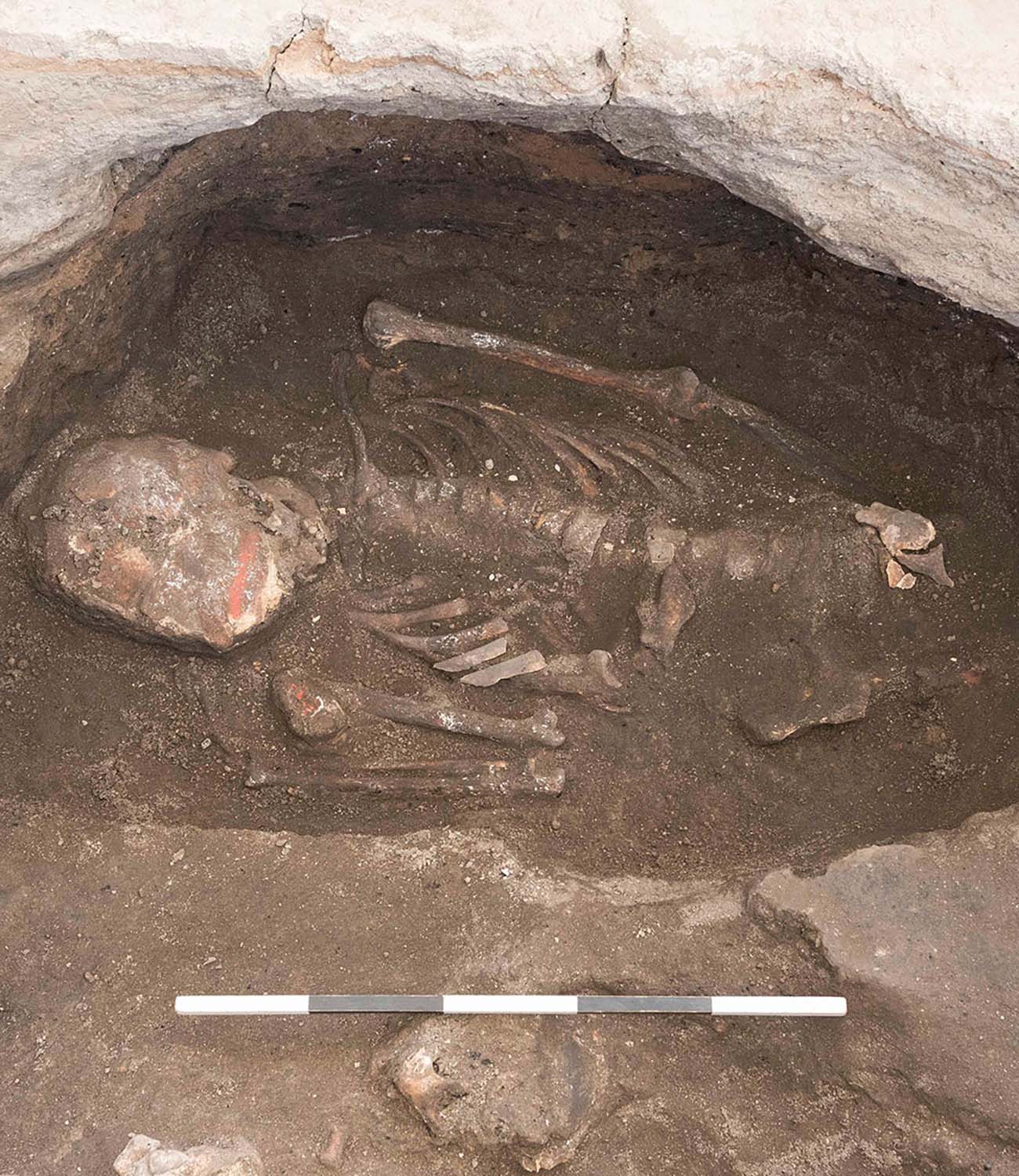Rituals
The colored skeletons of Çatalhöyük
The inhabitants of the "oldest city in the world" in Çatalhöyük (Turkey) buried their dead, dug them up, painted their bones, and reburied them several times. Researchers from Bern’s Institute of Forensic Medicine took part in the excavations.
Çatalhöyük in Central Anatolia, Turkey, is one of the most important archaeological sites in the Middle East. This Neolithic (New Stone Age) settlement dates back to between 9,000 and 8,000 years ago and is considered the oldest city in the world.
The houses of Çatalhöyük contain archaeological traces of ritual activities with skeletons bearing traces of colorants, as well as associated wall paintings. Now, for the first time, an international team which includes researchers from Bern, has provided a detailed analysis of pigments on bones and walls of burial spaces. Marco Milella of the Department of Physical Anthropology at the Institute of Forensic Medicine of the University of Bern, lead author of the study, assisted in the excavations and tries to make the skeletons from this fascinating society “speak”.
Among other things, the researchers proved that red ochre was the most commonly used pigment and that the walls of the burial rooms were also painted at each burial. In addition, some members of the community in Çatalhöyük “stayed” in the community after their death. Parts of their skeletons were dug up and circulated for some time before being buried again.
Learn more
Institute of Forensic Medicine, Department of Anthropology
At the Institute of Forensic Medicine in Bern, the Anthropology Department examines mummies, skeletons and bone fragments against the background of forensic medicine and cultural history. The research focuses on questions concerning the identification of unknown dead and the determination of the cause of death in a forensic context. In the archaeological context, scientific questions on population composition, disease burden as well as nutrition, social stratification and origin of populations are dealt with.
The Department of Anthropology uses the following methods to research material from different regions and temporal contexts: anthropological-morphological and histological diagnostics, mass spectrometry of stable isotope ratios, ancient DNA analyses and imaging techniques.
